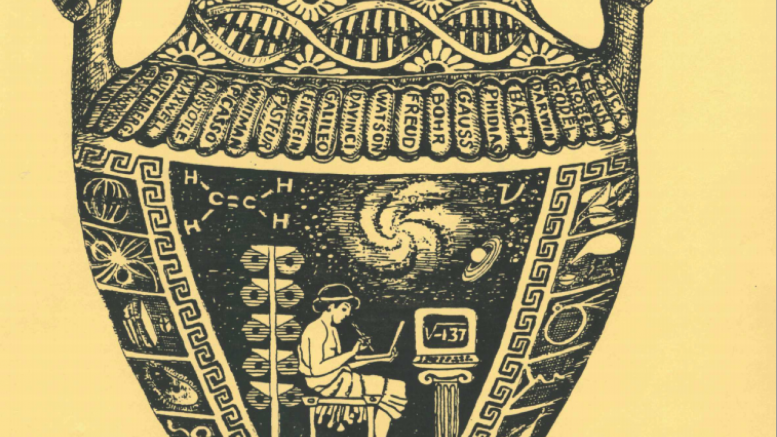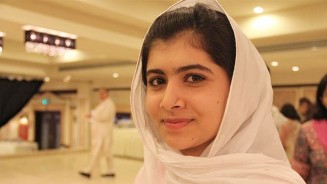On a chilly September morning in 1986, teenagers from across the state arrived at a barely furnished building on the outskirts of a seedy Chicago suburb. Beads of sweat rolled off the brows of those 15 year olds as they kissed their parents good bye. They carried bags inside to a freshly shampooed carpet. Around them, they saw only smiles and words of encouragement. Secretly, though, the adults around the nervous students were wiping their brows, too. Some students weren’t stressed. They were the true pioneers, ready to jump into the deep end. They realized things like. “Today is the first time I have ever felt like I really belong.”
That day marked the arrival of the the 210 members of IMSA’s charter class, students who wanted to escape their old academic life for something exciting and new. The adults were the men and woman who left steady, well paying jobs to find fulfillment and reignite the passion that led them to want to teach. Everyone felt a sense of terrifying hope.
In a way, that feeling never left IMSA, not after that first class moved in, not after the second, not even after the class of 2018 arrived this fall. Students come to IMSA because they crave a challenge. Luckily, they arrive to a plethora of challenges: academic, social, political, economic, and even ideological. These challenges are completely necessary for IMSA’s continued survival as an institution. If her students don’t grow, how can they be said to have learned? This question gives rise to an even more important question about IMSA: how exactly does the institution help students learn? IMSA has, since its founding, aimed to be “the world’s teaching and learning laboratory,” a “pioneering educational community,” and “decidedly different.” But really, what is IMSA? Is it just a high school that got too big for its britches? The question that arises from many other questions, though, is this: has IMSA stopped pioneering?
Certainly these words elicit an emotional response for many. To explore this question, let us start at the beginning of IMSA’s history and progress to the present, stopping along the way for some truly inspiring moments of our history.
In the months and years before that first class arrived, countless hours went into planning the Academy. The three biggest players in the emergence of IMSA most IMSA students have heard of only in quiet conversations with nostalgic administrators: Dr. Stephanie Pace-Marshall, Gov. Jim Thompson, and Dr. Leon Lederman. Pace-Marshall was an educational theorist and leader, taking the lead as the first Executive Director of IMSA, the office that quickly turned into the President. Gov. Thompson was a strong friend and advocate, acting as the desperately-needed representation IMSA needed in Springfield. Leon Lederman was the Director of Fermi National Accelerator Laboratory (Fermilab). It was Lederman who introduced the idea of IMSA to many people.
In her thesis The Art of Creating a School, Judith Mary Coates interviewed many of the charter staff and founders of IMSA. According to Coates, “when asked if they could recall the specific moment when they each had become attracted to the concept of the Academy, the following individuals all referred to one common catalyst, Dr. Leon Lederman.” That list of individuals includes Gov. Thompson, Pace-Marshall, the current Chairwoman of the IMSA Board of Trustees, and James Pearson, for whom the Pearson Lecture Hall is named. This is not to diminish the vital roles of the many people involved in the Academy’s beginning, rather, highlighting the early visionary leadership of Lederman. His was precisely the kind of out-of-the-box thinking that keeps IMSA running.
Lederman, in his capacity as Director at Fermilab, hosted a curriculum workshop, inviting dozens of educational and scientific leaders. The result of this workshop was a proposal for an innovative kind of high school, the Illinois Science Academy. The proposal featured a wonderful cover featuring a Grecian vase with intricately designed images of scientists and protons and all manner of odds and ends. As such, it’s lovingly called the Urn Report. It outlined a school that most would recognize as IMSA, from the university like scheduling to the I-days. This original report also outlined the most ground-shattering program that the Academy was to facilitate. In no small part due to Lederman’s own research experience, the proposed Academy has student mentorship from independent labs around Chicago and student research run at those labs or even on IMSA’s campus. This is what would eventually become, with relatively little change, the Student Inquiry and Research (SIR) program. Another facet of this proposal was the Seminar program. In this program, teachers would offer intimate classes meeting around two hours a week. Seminars would have carried ½ of an academic credit and be an “ideal place for visiting scholars.” Examples of proposed Seminars included “The Camera,” “Topics in Renaissance History,” “Modern Agriculture,” and “Physics and Music.”
To many, this plan seemed like a world-altering program, the best of its kind. In truth, though, IMSA is not the first school to offer this kind of experience. NCSSM offered notably similar programs even at the time. The main point of divergence for IMSA was a slightly heavier focus on research, a distinction that lasts to this day. Some claim that this is what makes IMSA uniquely innovative. Some would claim that is not a significant departure from the established norm of residential STEM schools. While that class of schools is the cutting edge of education, IMSA, as proposed, might just be a middle-of-the pack school.
Through an intense series of legislative disagreements and decisions – check out Coates’ thesis if you want that whole story – IMSA began its run. Students moved in, moved out, moved back in, and somewhere in all the moving people learned. To ensure that this learning stayed on track, IMSA developed a fairly rigorous method of teaching, drawing on many similar methods, called Problem-Based Learning (PBL). This method organized class’ units as “messy, ill-structured problems.” An example of a PBL-style class unit might be focusing on developing a rocket ship for use to take passengers to a hypothetical lunar colony. The teacher would then tell what they know and help students find what they need to fill the gaps, acting as facilitator, not necessarily as explainer. Like all PBL problems, it is inherently interdisciplinary, it does not have a simple answer, and it requires creative insight using scientific concepts.
IMSA has had a long history of teaching like this. One of the pioneers at IMSA of this method, former Social Science faculty Dr. Bernie Hollister, designed a class called Science, Society, and the Future, which ran from 1989 to 2007. This was a PBL style course focused on the complex problems of life on this planet. Common subjects included disease, overpopulation, and science fiction-esque transhumanist biotechnology. A classic prompt for this class was to analyze what would happen if a plague similar to the Black Death were to strike America. Research had to be conducted in the type of disease it would be, how the CDC would respond, and how it would compare to other epidemics, like AIDS in the late 1980’s and early 1990’s. Because of its scientifically-oriented nature and the messy problems it tackled, it counted as both a science and social science credit.
Science, Society, and The Future also laid claim to an intensely interesting experiment in student motivation and metacognition. All students were required to write in personal journals called Thinking Logs. In these, students were forced to analyze what and how they learned. Ideally, this was a chance for students to deepen understanding in a continual conversation with their instructor. Often, it turned into mere busywork for results-oriented students who didn’t value the metacognitive goals of this exercise.
While Science, Society, and The Future, was certainly an interesting experiment, a sophomore core science class, Integrated Science, might be the most interesting course ever offered at IMSA. It incorporated chemistry, biology, and physics into a cohesive course designed to prepare students for both elective classes at IMSA and real world scientific problems. It ran from 1994 to 2001. Focusing on one problem at a time, students went through units for their sophomore and junior years until they had a robust understanding of IMSA’s core science competencies.
This class drew a lot of attention from for IMSA. While students initially thought it was an interesting opportunity, other parties grew interested in IMSA. The designers of Integrated Science presented the system of integrating fields of study in high school classrooms at a Smithsonian conference. One of these designers, current biology faculty Dr. Don Dosch, is still intensely proud of this course. He claims that Integrated Science was a “highlight of his career.” One of the biggest points of pride with Integrated was that it focused on “transferring authority” from the teacher to the student. Integrated focused on students taking control of their learning. In Dosch’s words, it was about “students discovering knowledge, not teachers professing it.”
Integrated, as amazing as it sounds, was plagued with problems. Dosch, proud as he is, appreciates the strain on teachers in Integrated. The class required a teacher to either be very knowledgeable in many subject areas or be comfortable teaching as a learner with the class, not knowing all the things necessary to solve the problem. In an interview with Pace-Marshall, Lederman claimed that, using gravitational forces as an example, “Students [in Integrated] knew enough about gravity to solve the problem, but not to say that they really understood Newton’s gravity equations.” This is a common issue with the entire PBL system.
While developing and marketing PBL teaching, IMSA created The Center for PBL @ IMSA and the Problem Based Learning Network (PBLN). These were a pretty big deal to say the least. PBLN constituted a system of educators and schools from across the world that worked together on establishing methods of communication and collaboration in the education industry. Through PBLN and The Center, IMSA helped catalyze Illinois’ shift towards a student-centered approach to teaching, not a teacher-centered approach. This helped contextualize IMSA and Illinois’ recent innovations in the broader conversation of constructivist teaching methods. PBLN and the Center has been phased out for philosophical and branding reasons and have morphed into Professional Field Services, which now focuses on offering means of communication like Professional Development days and offering students across the state opportunities to engage in inquiry based education and STEM camps through the Allies and Fusion program.
These innovations and experiments all happened over 10 years ago. What makes them interesting to many IMSA students now is that they are no longer around. They seem interesting, novel, “other.” But sometimes, IMSA classes don’t fail. Taking a step back from the current biases of both students and teachers, IMSA has a remarkably interesting science core class right now: Methods of Scientific Inquiry (MSI). MSI was first offered in 2006 and is heavily based in previous research-oriented classes spanning from the first year of classes at IMSA. How many high school students are afforded an opportunity for their teacher to give them 100% unwavering and unyielding support on a scientifically rigorous project? If someone was to explain that opportunity to nearly anyone not familiar with MSI, it would sound amazing. The biggest problems with current MSI program is that teachers and students alike do not respect the class as the opportunity for inquiry that it can become with a simple shift of attitude. Who is to say that IMSA students cannot create a truly interesting question about sociology, psychology, chemistry, or biology? With teachers who are comfortable facilitating and not simply teaching as well as students who understand that they can do anything, MSI can be an opportunity to ignite passionate inquiry, not just learning the mechanics of science writing.
Returning to the notion of creative catalysts, Dr. Eric McLaren, a former principal of IMSA, was diagnosed with ALS a few years after MSI’s inception. The 2007 school year saw a massive shift in science curriculum, the last shift of its size to happen to date. According to Dosch, McLaren acted as a trusted administrator who could bridge gaps between departments and between students. In a sense, he acted as another in the line of creative catalysts. It’s possible that the lack of curriculum shifts since the 2007 school year is due to shifting leadership at the principal and presidential levels. IMSA has lacked a creative catalyst able to act on their plans. Without this steady actor, what has IMSA been up to?
PBL related programs are gone. Integrated Science and Science, Society, and The Future are no longer offered. MSI is criminally underutilized. A lot, though, is left. The Seminar program that the Urn Report originally proposed still thrives in the biology and computer science departments. Each offer a Seminar every year. Biology seminars are a heavily literature based class that usually focus on creating a few meaningful products and presentations. These classes are almost entirely facilitated in a group teaching style. In B-wing of the main building, along the walls near the B154 and B156, the posters describing stem cell research still hang. Across from B109 are some of this year’s Seminar in Bioinformatics posters.
The SIR program is also an incredibly pioneering opportunity. In the past ten years, it has seen massive growth, only shrinking in participation numbers slightly over the past two years. NCSSM, the school IMSA is loosely based on, has approximately 35% of people involved with research at any time. IMSA has closer to 50% or 60% at any time with 80% of people doing an SIR at sometime in their IMSA career. This, though not new to IMSA students, is truly the cutting edge of what high schoolers can do. The SIR department occasionally angers labs by even asking if high schoolers can participate in undergraduate or graduate level research, even in assistant positions. Most labs SIR works with, however, have come to realize that, at least IMSA students can participate in rigorous research.
There is also a growing interest in non-academic and co-curricular work in fields like design and entrepreneurship. For this kind of education, the innovation hub IN2 is on its way. The Maker Squad which is already hard at work making anything and everything in B154 – the Energy Center – has helped History of Technology, MSI, and Engineering classes by printing and crafting. An SIR is even being conducted to model all of IMSA in a 3D environment for use on virtual reality platforms. Innovative opportunities to engage students in classes like this and to have speakers in the new IN2 space are wonderful, but what IN2 will add to everyday learning experiences or even to the course catalog is yet to be determined.
The last possible candidate for academic innovation are the band of recent StudCo projects and initiatives: the Student Computer Science Initiative, The Exploration Sessions, and a few current projects. StudCo has been working a lot to try to influence academics in recent years. While the rumors surrounding some of their projects are exciting, StudCo has been met with faculty resistance, spotty administrative support, and a student body who isn’t always well-informed.
So, then, we now have to return to the question that sparked this investigation: does IMSA still innovate? Has it ever been a pioneering community? The answer, unsurprisingly, is intensely complicated. Whether or not you think that IMSA’s academics have stagnated stems from what you think is valuable in a school like IMSA. If you think that slow but steady progress, with lots of data, peer-reviewed graphs, and steady relationships with colleges are important, then you might say that IMSA has contributed real advances in education. If you subscribe to a more modern idea of iterative discovery – that you should fail fast and fail often – IMSA has certainly stopped thinking outside of the box. We haven’t had a major curriculum overhaul or intense pilot program in almost 10 years.
Individual philosophies may differ on this subject, but that doesn’t really matter in the grand scheme. IMSA has always been a community influenced by a select few charismatic leaders, people like Leon Lederman, Stephanie Pace-Marshall, Bernie Hollister, Eric McLaren, Max McGee, and even some students like last year’s SudCo president Vinesh Kannan. The thing that these people all hold in common is a dedication to fast metrics and risky experimentation.
John F. Kennedy once said “There are people in every time and place who wish to stop history in its tracks. They fear the future, mistrust the present, and invoke the security of a comfortable past which, in fact, never existed.” IMSA students harken to a mystical past of ideal innovation and experiments. It never existed. Administrators and faculty are scared for the future of the Academy. It will be fine. Most crucially, the few people that defy this dichotomy are the creative catalysts left at IMSA. They are the ones who fuel change. Luckily for everyone, anyone can become a catalyst for positive change at IMSA. The question is: will you join them?
A special thanks goes out to the IMSA Archivists, Dr. Christian Nøkkentved and Marti Guarin in the IRC. They assisted immensely with the research that went into this article, both in providing me with primary documentation and providing me with secondary anecdotes that helped contextualize the documents. They are hard at work in the IMSA Archives most Wednesday afternoons. Special thanks also to Donald Dosch. Thanks also to the dozens of people that I informally discussed this subject who helped point me in the right direction.






Really great article. The current iteration of Academy bureaucrats and administrators could stand a lot to gain by addressing the fundamental issue of IMSA’s stagnation.